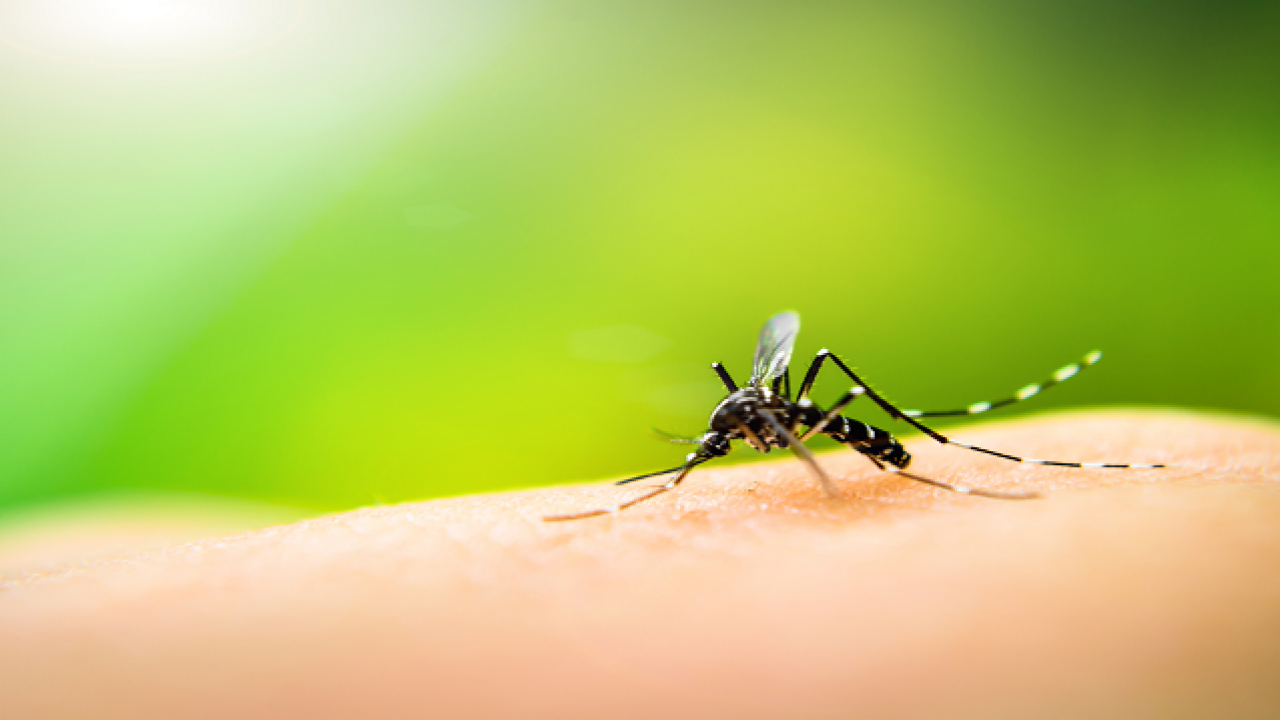
What is the link between climate change and human infectious disease?
Climate change refers to the long-term changes in the Earth’s climate, including changes in temperature, rainfall, and weather patterns. These changes are largely driven by human activities such as burning fossil fuels, deforestation, and industrial processes. The increasing concentrations of greenhouse gases in the atmosphere trap more heat, leading to global warming and other changes in the climate.
The impacts of climate change are already being felt around the world. We are experiencing more frequent and severe heatwaves, droughts, and wildfires, as well as more intense storms and floods. These events have devastating consequences for both humans and the environment, including loss of life, displacement, food insecurity, and biodiversity loss.
The Link Between Climate Change and Infectious Disease
The link between climate change and infectious disease is complex and multifaceted. Changes in temperature and precipitation patterns can affect the distribution and transmission of many infectious diseases, including vector-borne diseases such as malaria, dengue fever, and Zika virus, as well as water-borne and food-borne diseases such as cholera and salmonella.
Vector-borne Diseases
Vector-borne diseases are those that are transmitted to humans through the bites of infected arthropods such as mosquitoes, ticks, and fleas. These diseases are highly sensitive to changes in temperature and precipitation, as they affect the development, survival, and behavior of the arthropod vectors and the pathogens they transmit.
For example, malaria, a mosquito-borne disease caused by the Plasmodium parasite, is highly sensitive to temperature and rainfall patterns. Mosquitoes require warm and humid conditions to breed and survive, and malaria transmission is highest in areas with temperatures between 20-30°C and rainfall between 200-300 mm per month. Changes in these factors due to climate change can lead to an increase in the number and distribution of malaria vectors and an expansion of the areas where malaria can be transmitted.
Similarly, dengue fever, a mosquito-borne viral disease, is also highly sensitive to temperature and precipitation patterns. Dengue transmission is highest in areas with temperatures between 26-29°C and rainfall between 100-300 mm per month. Changes in these factors due to climate change can lead to an increase in the number and distribution of dengue vectors and an expansion of the areas where dengue can be transmitted.
Water-borne and Food-borne Diseases
Climate change can also affect the transmission of water-borne and food-borne diseases. Changes in temperature and precipitation can alter the quality and availability of water resources, leading to an increase in the incidence of water-borne diseases such as cholera, typhoid, and hepatitis A. In addition, changes in temperature and precipitation can also affect the growth, survival, and distribution of food-borne pathogens such as salmonella and E. coli, leading to an increase in the incidence of food-borne diseases.
For example, cholera is a water-borne disease caused by the Vibrio cholerae bacteria. Cholera transmission is highly sensitive to changes in temperature and precipitation patterns, as these factors affect the growth and survival of the bacteria in water sources. Changes in these factors due to climate change can lead to an increase in the incidence and distribution of cholera, particularly in areas with poor sanitation and water infrastructure.
Impacts on Vulnerable Populations
The impacts of climate change on infectious disease are not felt equally across all populations. Vulnerable populations, such as the poor, elderly, and those with underlying health conditions, are at a higher risk of infection and have fewer resources to cope with the impacts of climate change. In addition, populations living in areas with weak health systems and inadequate water and sanitation infrastructure are more susceptible to the spread of infectious diseases.
For example, in sub-Saharan Africa, where malaria is already a major public health problem, climate change is expected to increase the burden of the disease. The poorest and most vulnerable populations in these regions are at the highest risk, as they often lack access to preventive measures such as bed nets and antimalarial drugs.
In addition, climate change is also expected to increase the incidence of dengue fever in many tropical and subtropical regions. Populations living in urban areas with poor sanitation and water infrastructure are particularly vulnerable, as they provide ideal breeding sites for the mosquitoes that transmit dengue.
Furthermore, climate change can also exacerbate the impacts of other diseases, such as respiratory illnesses and cardiovascular diseases, which can weaken the immune system and make individuals more susceptible to infectious diseases.
Impacts on Agriculture and Livelihoods
Climate change can also have indirect impacts on infectious disease through its effects on agriculture and livelihoods. Changes in temperature and precipitation can lead to changes in crop yields, affecting food security and livelihoods. This can lead to malnutrition and weakened immune systems, making individuals more susceptible to infectious diseases.
In addition, changes in land use and deforestation can alter the habitat and distribution of many vector-borne diseases, as well as increase the risk of contact between humans and wildlife, leading to the emergence of new infectious diseases.
For example, the emergence of Ebola virus disease in West Africa in 2014 was linked to changes in land use and deforestation, which led to an increased contact between humans and fruit bats, the natural reservoir of the virus.
Mitigation and Adaptation Strategies
Given the complex and multifaceted nature of the link between climate change and infectious disease, it is essential to implement both mitigation and adaptation strategies to reduce the impacts of climate change on human health.
Mitigation strategies aim to reduce greenhouse gas emissions and slow the rate of climate change, while adaptation strategies aim to reduce the vulnerability of populations to the impacts of climate change.
Mitigation Strategies
Mitigation strategies to reduce the impacts of climate change on infectious disease include reducing greenhouse gas emissions through energy efficiency, renewable energy, and low-carbon transportation. In addition, efforts to reduce deforestation and promote sustainable land use practices can help reduce the emergence of new infectious diseases.
Adaptation Strategies
Adaptation strategies to reduce the impacts of climate change on infectious disease include strengthening health systems and improving access to preventive measures such as vaccines, bed nets, and safe water and sanitation infrastructure. In addition, targeted surveillance and control measures, such as vector control programs and early warning systems, can help prevent and control outbreaks of infectious diseases.
In addition, addressing social and economic inequalities can also help reduce the vulnerability of populations to the impacts of climate change on infectious disease. This includes improving access to healthcare, education, and livelihood opportunities, particularly for vulnerable populations.
Conclusion
Climate change is a global challenge that has far-reaching impacts on human health, including the transmission and distribution of infectious diseases. The link between climate change and infectious disease is complex and multifaceted, and requires a coordinated effort to address. Mitigation and adaptation strategies are essential to reduce the impacts of climate change on infectious disease and to ensure the health and well-being of populations around the world.
Visit DocMode for Courses and lectures









